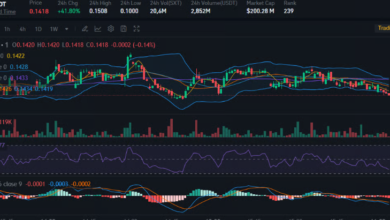Innovating Marine Through Foam Conversion and Bespoke Acoustics

Introduction
In today’s highly technical manufacturing world, foam conversion has emerged as a critical process that enables industries to meet evolving challenges in noise control, thermal insulation, and structural design. Far beyond cutting sheets of foam, this technique transforms raw foam materials into specialized components that serve both functional and aesthetic purposes.
Whether it’s enhancing the cabin experience in a construction vehicle or improving the thermal performance of a yacht engine room, foam conversion has made bespoke acoustics an accessible reality. Through precision equipment and industry-specific knowledge, manufacturers like Acoustafoam Limited are revolutionizing the way foam is applied across sectors.
What Is Foam Conversion?
Foam conversion refers to the transformation of foam materials—such as polyurethane, polystyrene, and polyethylene—into custom-designed products. These products are tailored to meet the specific demands of industries like automotive, marine, HVAC, and medical. The process can involve:
- Cutting and profiling: Using band saws, CNC machines, and water jets to achieve intricate designs.
- Laminating and moulding: Combining materials or shaping foam into durable, high-performance components.
- Die-cutting and spraying: Allowing for customization with coatings or additional materials for protection or performance.
The precision and adaptability of foam conversion make it indispensable for creating acoustic and thermal solutions that are both functional and visually appealing.
See also: How Data-Driven Insights Are Transforming Business Growth
Applications Across Marine and Industrial Sectors
Marine Industry: Quiet Performance at Sea
Noise on boats and yachts can significantly affect user comfort and operational performance. Acoustic insulation in engine rooms, cabin walls, and control areas is crucial. Foam conversion allows manufacturers to produce custom-fitted soundproof panels and bespoke acoustic linings that combat engine noise, wave impact, and mechanical vibrations.
At Acoustafoam, solutions like thermal-insulated foam blocks and pre-moulded acoustic panels are tailored to fit complex structures in marine environments. With 37+ years of experience, the company addresses soundproofing in even the most challenging environments at sea.
Industrial Machinery: Silencing the Factory Floor
In busy industrial environments, machinery noise is more than an annoyance—it’s a health hazard. Through foam conversion, manufacturers can reduce these risks with sound-dampening enclosures, vibration-absorbing pads, and internal linings for machines.
The use of bespoke acoustics helps companies comply with workplace noise regulations while enhancing productivity by creating quieter environments. Acoustafoam’s machinery enclosures and profiled foam solutions not only suppress sound but are also designed to endure harsh factory conditions.
Automotive and Public Transport: Driving Comfort
Vehicle cabins today are expected to be quiet, insulated, and comfortable. Foam conversion in the automotive sector enables the creation of headrests, armrests, trim panels, and insulation systems that are lightweight, fire-resistant, and acoustically efficient.
Moreover, Acoustafoam is one of the few manufacturers with Integral Skin Moulding capabilities—allowing production of dual-colored components embedded with UV stabilisers and antibacterial additives.
Benefits of Foam Conversion in Specialized Applications
1. Precision and Customization
Using advanced equipment like CNC profilers and water jets, foam can be shaped into any required specification, enabling bespoke acoustics for unique installations. This precision supports industries where one-size-fits-all simply doesn’t work.
2. Enhanced Acoustic Control
Foam conversion enables acoustic solutions that absorb mid- to high-frequency sounds, significantly reducing reverberation. This is especially beneficial in studios, offices, auditoriums, and even heavy machinery.
3. Improved Thermal Insulation
Thermal management is crucial in both marine and industrial applications. Converted foam products can be engineered to offer excellent insulation, contributing to energy efficiency and comfort.
4. Lightweight and Durable
Modern foam materials are designed to be both lightweight and robust. This makes them ideal for applications where weight-saving is critical, such as in aerospace or automotive sectors, without compromising on performance.
5. Eco-Friendly Options
Sustainable practices in foam conversion are becoming increasingly common. Recycled and low-impact materials are now integrated into the conversion process, reducing environmental footprint without sacrificing quality.
Bespoke Acoustics: Going Beyond Standard Soundproofing
While traditional acoustic foam products serve basic needs, bespoke acoustics go further by providing solutions tailored for specific challenges. For example:
- Construction Vehicles: Acoustafoam developed custom acoustic insulation around radiators in noisy construction equipment, a task that conventional products couldn’t solve.
- Medical Applications: From orthopaedic support to noise reduction in hospital environments, customized foam products meet both regulatory and comfort standards.
- Military Vehicles: The demand for fire-resistant, high-performance foam trim has led to specialized solutions that combine both protection and performance.
The ability to customize foam to exact specifications opens the door to innovation in fields where ordinary materials fall short.
The Importance of Design, Testing, and Customer Collaboration
Acoustafoam’s commitment to product development begins at the design stage and continues through prototyping, testing, and quality assurance. With services like acoustic testing and rapid prototyping, the company ensures that each solution aligns with client expectations and industry standards.
Their ISO 9001:2015-certified management system ensures consistency, while the in-house design team collaborates with clients to incorporate specific requirements—even facilitating product inserts during moulding to accelerate production.
Why Choose Foam Conversion Over Traditional Materials?
Unlike metals or rigid plastics, foam offers flexibility, resilience, and customizability at a lower cost. Its ability to adapt—both structurally and acoustically—makes it the material of choice in many industrial and marine settings. Foam conversion turns this versatile material into engineered solutions with real-world benefits, making it far more than just a filler or cushion.
Conclusion: Engineering the Future with Foam
Foam conversion is no longer a behind-the-scenes process—it’s a strategic asset that enables industries to innovate, reduce noise, improve thermal efficiency, and offer customized solutions to complex challenges. By integrating bespoke acoustics into everything from engine rooms to factory floors, companies like Acoustafoam are pushing the boundaries of what’s possible with foam.
Whether you’re building a quieter marine engine room or a more comfortable train carriage, custom foam solutions bring technical excellence, cost-effectiveness, and environmental responsibility into one package. The future of industrial innovation is soft, silent, and precisely engineered—thanks to foam conversion.




